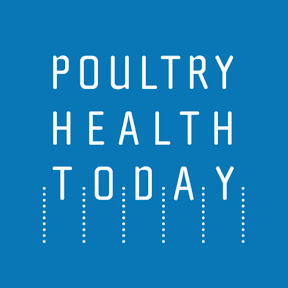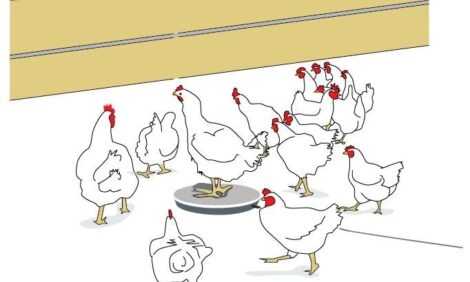



Five critical factors for in ovo vaccination success
In ovo vaccination has proven popular in commercial hatcheries as it can offer early immunity against prevalent pathogens, consistent vaccine delivery and a less labor-intensive process involving reduced handling of chicks.
While each of these benefits is achievable, in ovo programs do require some care to optimize the process. With that in mind, Chris Williams, PhD, director of technical services for Zoetis, outlines the five critical points to getting the best out of in ovo vaccination programs:
1. Egg location
Though eggs are incubated with the small end pointing downward as standard, eggs may lean off-center in the incubation tray, Williams said. In turn, the embryo orients according to gravity with the head pointing away from the direction of the tilt.
This makes the angle and the orientation of an egg an important consideration, he explained. “When we inject through the egg all of them may not be perfectly aligned, so the injectors must take that into consideration.”
After locating the surface of the egg, it is important to adjust the trajectory to hit it at a perpendicular angle, rather than straight up and down, Williams said. Horizontal adjustment is then also needed, as eggs are not all at the same height.
2. Shell penetration
“Shell is a formidable barrier, as it’s made to protect the embryo while it’s developing” Williams explained. In providing that protection, however, it creates a significant challenge for in ovo vaccine delivery.
The optimal egg injection system will have a ‘needle inside a needle’ system that allows one needle to penetrate the shell only and another which delivers the vaccine to either the embryo or the amnion. This has a sanitary role but also helps reduce cracking, he said.
3. Sanitation by design
Sanitation needs to be considered at a system level and in the environment where vaccination is carried out, but effective sanitation between injections — where chlorine is used to provide instant destruction of bacteria — is pivotal, Williams said.
“Effective needle sanitation is the cornerstone of the technology as it is applied commercially,” he explained.
Dual-needle systems mean that sanitation is achieved in a separate step from injection.
“The retraction of the injection needle initiates the sanitation cycle, with chlorine bathing both the exterior of the needle and the small holes in the punch,” he added.
4. Site of Injection
While there are five compartments within the egg at the time of vaccination, only two — the embryo and amnion — are effective sites for vaccine delivery, Williams said.
The other sites — allantois, yolk and air cell — don’t allow for the embryo to be exposed to the antigen correctly, he noted, citing evidence that Marek’s disease vaccine delivered only to the embryo body or amniotic fluid results in excellent protective immunity.
In developing in ovo vaccination equipment, researchers considered not only the need to deliver vaccine in the correct site but also appropriate timing, Williams said. The window or the timing for vaccination is approximately between 17 days and 12 hours, and 19 days and 4 hours of incubation, he said.
“We’re more concerned with the development of the embryo physiologically. It should be in the position to hatch with its head under the right wing, and we should begin to see the yoke being absorbed into the abdomen,” he explained.
The starting of hatch, or pipping, is another concern. At time of vaccination there should be a maximum of 1% to 2% pipping eggs, with a target of 0%, he added.
5. Vaccine specifications
To ensure proper vaccination procedure, it is important to consider the exact nature of the vaccine being used, Williams said.
“Marek’s vaccine is a herpesvirus that is contained in a fibroblast cell, and this cell suspension is the vaccine,” he explained. “Therefore, the pumping system that handles that vaccine must be gentle. We must be able to pump from the bag through the pumping system and down through the needle into the embryo, and this is a very, very fragile type of vaccine.”
A synchronized, diaphragm-driven pumping system helps ensure safe and effective delivery of a specified amount of vaccine, he said, while maintaining integrity from the bag to the needle.
Additional factors to consider for in ovo vaccination include understanding which vaccines aren’t compatible, such as herpesvirus of turkey (HVT) and HVT vectors, onset and duration of immunity, the nature of the disease challenge and maternal antibodies.
“All of these factors come together to give you an optimal look at your process when you’re vaccinating in ovo,” Williams added.













